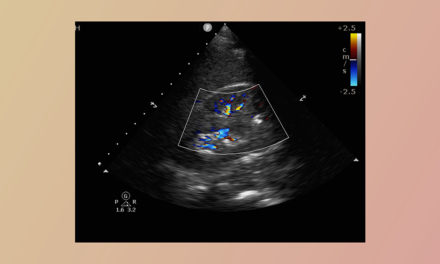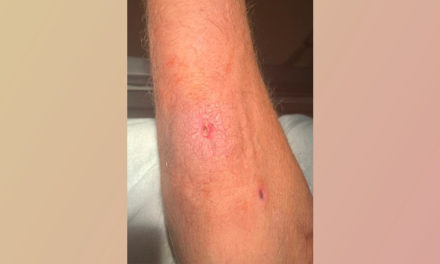Fall 2019: When Treating Kids
To prevent communication gaps when treating kids, all specialties can benefit from lessons learned in the Emergency Department (ED), where conversations are rushed, stakes are high, teams are assembled ad hoc, and physicians seldom have relationships with the patient. These same conditions are becoming more prevalent in other specialties due to patient or family relocations, rapidly merging healthcare systems, and changes in employee healthcare plans or contracts. The days of having the same doctor for decades are fast disappearing.
Communication gaps are particularly risky when treating kids, because the patient often cannot communicate, and the caregiver—whether a parent, other relative, or babysitter—must speak on the patient’s behalf. Poor communication not only endangers patients, but increases physicians’ exposure to potential malpractice claims, according to a recent study of malpractice claims involving children.[1] Based on 10 years of claims filed against physicians in 52 specialties and subspecialties, the study found that communication breakdowns between patients/families and providers contributed to 15 to 22 percent of claims (depending on age group).
System issues often contribute to communication failures, such as when a child’s previous medical records cannot be found in an electronic health record (EHR) database because of a misspelled name or incorrect date of birth. When facing such frustrating, systemic obstacles to providing care, it is especially important for physicians to have meaningful conversations with patients and parents/caregivers. Consider that when dealing with pediatric cases, you have a minimum of two patients—the child, the parent or guardian, the actual current caregiver, sometimes grandparents offering advice, coaches, teachers, siblings, and possibly more.

Here are four communication lessons learned from the ED regarding pediatric patients based on cases seen over 30 years of pediatric EM practice:
1. Be Sure Caregivers Understand Discharge Instructions
A mother brought her 10-year-old son to the ED with abdominal pain. Following examination, testing, and observation, the patient was discharged home after verbal and written instructions to return immediately if the pain or symptoms worsened or if he developed specific red-flag symptoms. Over the next 48 hours, the child did display those symptoms, but the mother called her pediatrician’s office for an appointment the next day, not realizing her son needed to be seen immediately. After the boy began vomiting blood, his mother called 911. The boy arrived at the ED via ambulance in cardiac arrest and died two days later as a result of a perforated appendix.
Lesson: Both verbal and written discharge instructions are important, and they must be presented in layperson’s terms. Some EHR instructions are complex and lengthy, so on a printout of instructions, highlight only key features or phone numbers. Three key components include: Follow-up details, disease or diagnosis red flags, and patient/family understanding of the treatment plan (antibiotics, physical therapy, antipyretics, and/or subspecialty referral). When conveying red-flag symptoms that indicate the patient should return, specify whom to call, the level of urgency, and the location (such as ED or clinic). Ask when the caregiver can obtain prescriptions, and if available, consider giving a first dose of medication in the clinic or ED before discharge.
Try to determine if the child has an existing relationship with a primary care physician (PCP) or subspecialist(s). Medicaid covers over 30 million children nationwide, including many high-risk children with special healthcare needs. It is important to make sure the caregiver knows the name of the child’s plan, designated PCP, and contact information.
Use the teach-back method: Instead of asking patients and/or parents whether they understand, ask them to tell you what they understand they should do, and when. This ensures everyone is on the same page. For school-age children and older, engage them in the process and discussion.
2. Avoid Vaccination History Assumptions
Case example: A mother brought her three-month-old infant to the ED with fever of 102°F and mild cold symptoms. At triage intake, the mother stated the infant had not yet received her vaccinations. The staff and physicians initially assumed she was against vaccinations. On further questioning and review of the EHR, it was determined the mother had tried several times to obtain vaccinations for her child without success due to PCP clinic appointment availability and staffing shortages. The infant looked well but had a complete septic workup and was admitted and treated for meningitis with a good outcome. In another scenario, an eight-month-old infant presented during peak bronchiolitis season with fever of 102.8°F. The parent gave a history of all shots being up to date. The patient was discharged with a diagnosis of upper respiratory infection and bronchiolitis but returned two days later with pneumonia and sepsis. On further inquiry, the parent was not the regular caregiver and the immunizations were not current.
Lesson: When treating children under two years of age, always request a detailed history regarding immunizations, neonatal history, and risk factors such as prematurity or chronic medical conditions. Parents often incorrectly indicate immunizations are up to date when having their child seen in the ED. Always check immunization records by asking if the parent has the patient’s immunization card, reviewing the EHR, or checking your state’s immunization registry (if available). Children without current immunizations and fever may require additional evaluation, and are at greater risk for serious bacterial disease. This is especially true for those under six months of age. Just because a patient is missing immunizations does not mean the parent is anti-vaccines or neglectful. There are legitimate reasons patients fall temporarily behind. Avoid making assumptions regarding the parent or caregiver that might negatively impact your communication and thought process.
3. Know Your Patient
Case example: Paramedics brought an African American teenager to the ED for pain. Their report to the triage nurse was that the young man probably had sickle-cell disease, had not attempted any pain relief on his own, and possibly could be a drug seeker. This same information was related to the ED physician, who initially approached the patient with frustration, but took the time to ask additional questions, including some ice-breaker questions such as: “Where do you go to school?” “What are you doing during your summer school break?” and “Tell me what you know about your disease and pain control.” The physician discovered the patient was an advanced honors student at a nearby prestigious university who had finished high school early to start college. He did not have sickle cell but another hematologic condition. He was visiting grandparents and could not reach them at work. His pain medications were in his out-of-town dorm room. He wasn’t sure what to do, and concerned neighbors recommended he call 911. His hematologist was consulted, and he was admitted for pain management and evaluation.
Lesson: Always confirm key elements of the history. It is difficult to get a correct history in a brief encounter, especially with someone you are meeting for the first time. Ask patients and/or parents some nonmedical getting-to-know-you questions, and confirm which adult is there with the child, the child’s primary caregiver, and the child’s level of functioning. What grade are they in? Do they play sports or have a hobby? Has their activity level changed? This helps give a sense of the person, and helps interpret what they say about their physical condition or what parents say about their child’s condition. Always speak directly to the child and allow the child to tell part of their story, especially when dealing with adolescents.
4. Ask the Right Questions
Case example: A mother signed her child in at triage/registration saying that her child was running a fever at home. The child had no fever and was playful. In fact, the mother was concerned her child had been abused while staying with her ex-husband over the weekend. The child had made some concerning comments upon her return home on Monday. The mother did not wish to report this concern at check in, and said she was scared of the father.
Lesson: Do read triage notes or medical assistant/staff notes, but begin your conversation with the open-ended question: “What are you most worried about today?” This may reveal the patient’s or caregiver’s true presenting concern—or it may simply help them cut through all the topics they could potentially discuss and skip straight to the most pressing concern.
Finally, rapport matters. No matter how strong your emotional intelligence, you can’t communicate well with everyone. A patient may be willing to confide in a female physician but not a male physician, or the other way around. A patient may understand one physician’s way of explaining things better than another’s. If you are not having a successful communication experience with a patient or caregiver, consider requesting that your patient see another healthcare provider if one is nearby and readily available, or include another staff member in the conversation.
As the recent study on malpractice claims involving children shows, good communication is not a luxury. It is essential to the well-being of both patients and physicians—particularly when those patients are young and often cannot communicate for themselves. ■
References:
1. Ranum, Darrell. Study of Malpractice Claims Involving Children. The Doctors Company. March 2019.
Additional Resources:
2. Pediatrics Risk Varies With Age; More Parental Outreach Needed. Healthcare Risk Management. June 1, 2019.
3. Study of Malpractice Claims Involving Children. The Doctors Company. April 9, 2019.
Samantha manages fcep.org and publishes all content. Some articles may not be written by her. If you have questions about authorship or find an error, please email her directly.


 This article originally appeared in EMpulse Fall 2019. View the
This article originally appeared in EMpulse Fall 2019. View the 






